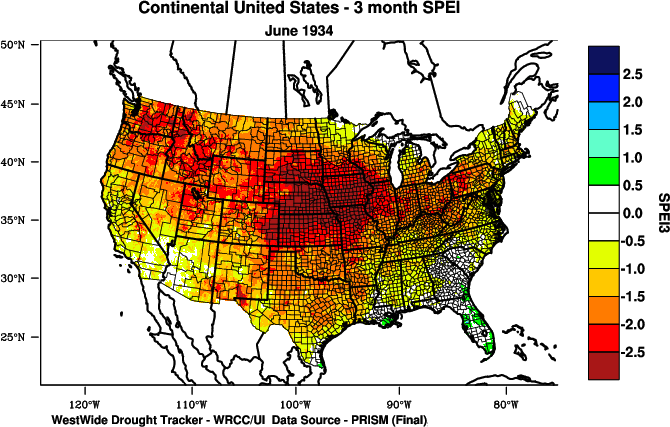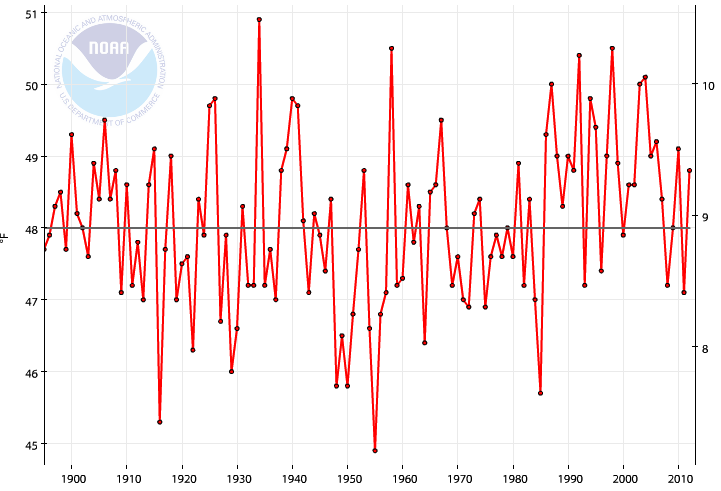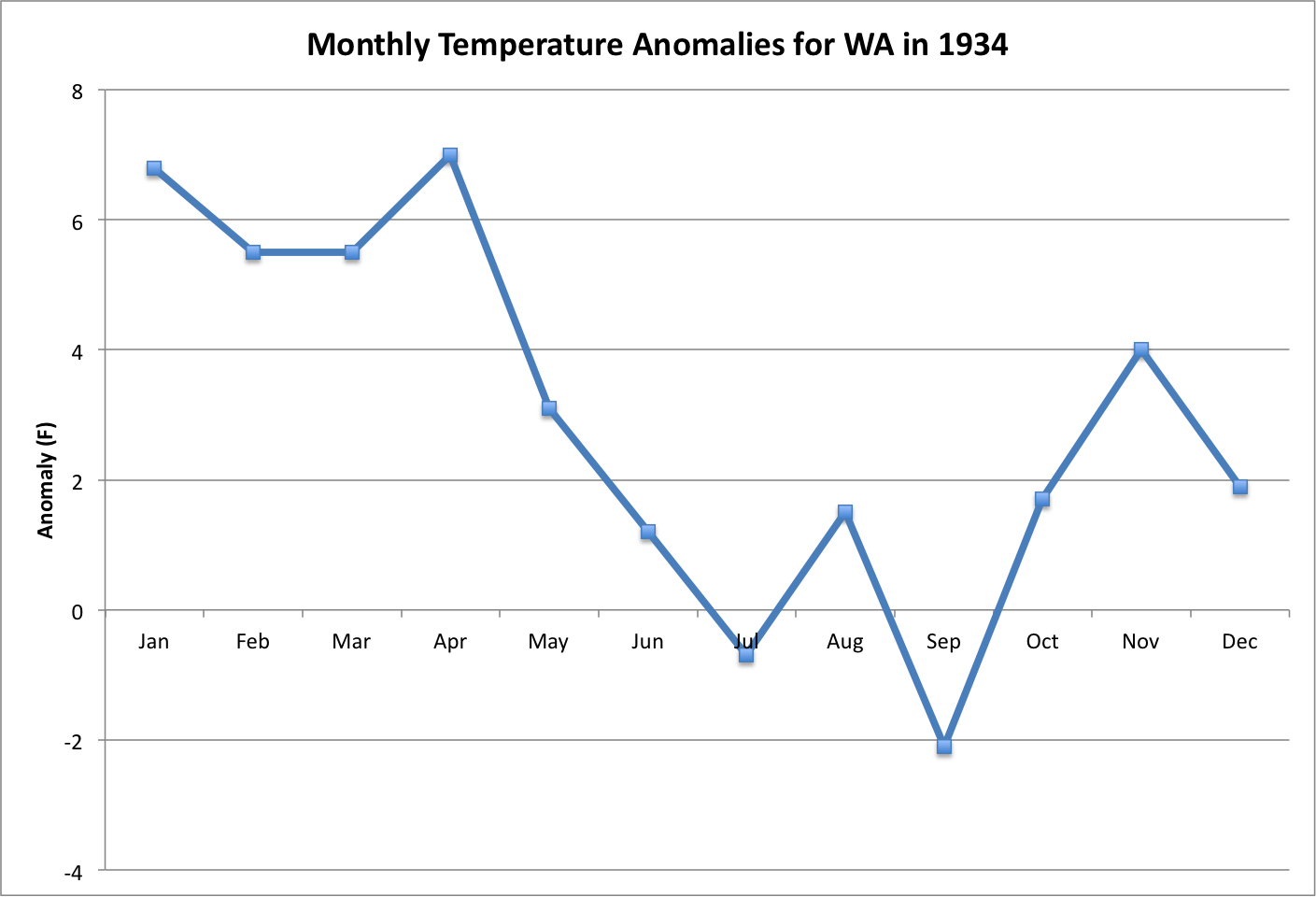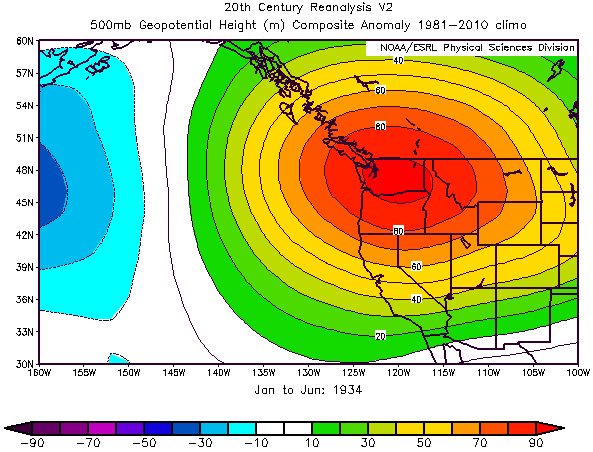1934 – The Warmest Year in WA State History
The devastating Dust Bowl drought of the 1930s is one of the most notable weather/climate events in US history. This drought was not restricted to the Great Plains, but instead at times extended across much of the country. This is exemplified in Figure 1 in terms of a map of the April-May-June 1934 Standard Precipitation Evapotranspiration Index (SPEI). In addition to dry conditions in the Pacific Northwest, 1934 was significant for WA in another way: it was the warmest year in state history.

Figure 2 shows the annual mean temperature time series averaged over WA state (from NCDC). 1934 stands out as the warmest year with an annual average temperature of 50.9°F, 2.9°F over the 20th century long-term average. 1998 and 1958 are tied as the second and third warmest years, with an average annual temperature of 50.5°F. While the overall trend in this time series is negligible compared to the variability, an extremely cold year (more than 2°F below the long-term average) has not happened since 1985.

The monthly temperature anomalies (Figure 3) indicate that the first half of 1934 was the reason the year was so warm as a whole. Temperature anomalies for the months of January through April were between 5 and 7°F above normal. Statewide mean temperatures were closer to normal June through October, but again exceeded 3.5°F above normal in November. Statewide precipitation was about 2” below normal for January through June (not shown); the anomalously low precipitation amounts and warm temperatures explain the low SPEI values shown in Figure 1. Total precipitation for 1934 was not unusual on an annual basis, however, as there was over a 4” surplus of precipitation in the second half of the year from a statewide perspective.

So what caused the anomalous warmth in January through June of 1934? Using the 20th Century Reanalysis product from NOAA-CIRES, the 500 mb geopotential height anomalies for Jan-Jun 1934 were plotted with respect to the 1981-2010 climatology (Figure 4). 500 mb heights in excess of 90 m greater than normal are centered over WA state during that time. The magnitude of these anomalies are about twice the magnitude of the next highest year during the Jan-Jun period in the 20th Century Reanalysis record (1871 through 2012). The warmth during Jan-Jun 1934 can be attributed to this substantial disruption in the atmospheric circulation.

The weather of the US during the 1930s is known for the Dust Bowl, and rightfully so. This summary merely serves to highlight that we experienced extreme conditions in WA state as well, and that 1934 still holds the record as the warmest year in state history. We appreciate the efforts of those that have developed the products used here, in particular the 20th Century Reanalysis and the Westwide Drought Tracker, that allow us to look back at the weather and climate so far into the past.